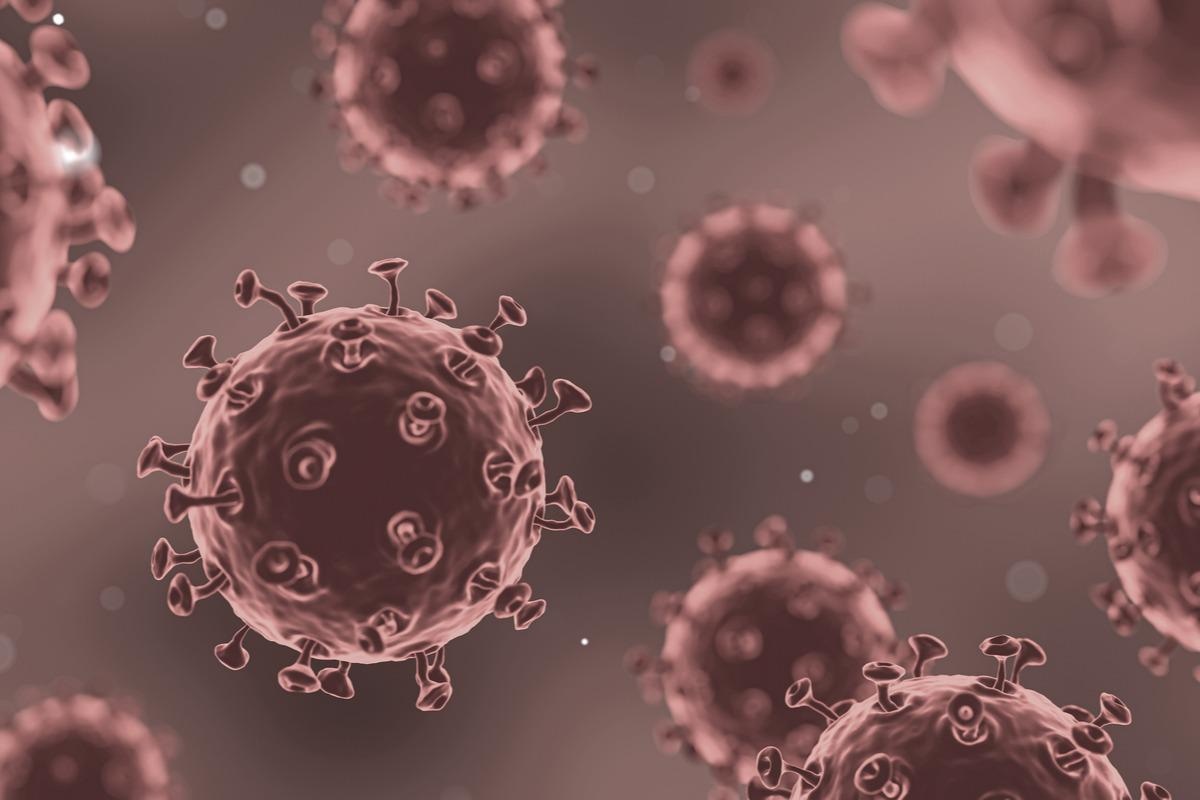In a recent study posted to the bioRxiv* pre-print server, researchers investigated the effect of severe acute respiratory syndrome coronavirus 2 (SARS-CoV-2) Omicron variant (OV) mutations on the binding of the receptor-binding domain (RBD) and angiotensin-converting enzyme-2 (ACE2) to study the overall binding profile of the RBD-ACE2 system.
 Study: Binding Interactions between RBD of Spike-Protein and Human ACE2 in Omicron variant. Image Credit: Puwadol Jaturawutthichai/Shutterstock
Study: Binding Interactions between RBD of Spike-Protein and Human ACE2 in Omicron variant. Image Credit: Puwadol Jaturawutthichai/Shutterstock
Omicron has over 15 mutations in the RBD region, the main target for coronavirus disease 2019 (COVID-19) vaccine and therapies. The biological effects of the RBD and other OV mutations, including K417N, E484A, and N501Y that alter Omicron's sensitivity to neutralizing antibodies or increase its infectivity, are largely unknown.
Since the RBD-ACE2 binding facilitates SARS-CoV-2 entry, initiating the infection process, developing a fundamental understanding of how the OV RBD interacts with human cell receptor ACE2 (hACE2) is crucial for understanding the infection mechanism, its evolution, as well as for the development of effective intervention measures to reduce Omicron transmission.
About the study
In the present study, researchers built a computational model of the Omicron RBD-ACE2 system (OV model), including all 15 RBD mutations G339D, S371L, S373P, S375F, K417N, N440K, G446S, S477N, T478K, E484A, Q493R, G496S, Q498R, N501Y, and Y505H.
The amino acids (AAs) of wild type (WT) SARS-CoV-2 strain were substituted with AAs of mutated OV, using the Dunbrack backbone-dependent rotamer library. They simulated the dynamics and binding mechanism of the Omicron RBD-ACE2 system using all-atom molecular dynamics (MD) simulations, followed by the molecular mechanics (MM) generalized Born surface area (MM-GBSA) method to compute the binding free energy (BFE). The MM-GBSA method allowed a per-residue and pairwise BFE decompositions to identify the role and the nature of RBD-ACE2 interaction for each mutation in the OV model.
The researchers compared the study results with the previously reported analysis of the RBD-ACE2 system of the unmutated WT RBD-ACE2 system to understand the effect of each new OV mutation and its interaction dynamics.
Findings
The K417N OV mutation hindered the pairing of RBD with D30 AA on ACE2 and reduced the RBD-ACE2 binding in the OV model; likewise, the observed loss of binding strength due to the G446S and Y505H mutations was under the influence of the N501Y mutations.
Similar to SARS-CoV-2 Alpha and Beta variants, the N501Y mutation in OV enhanced the RBD interactions with ACE2. However, it eliminated the hydrogen bond (HB) between the G446 and Q42 of ACE2 and reduced the strength of the Y505:E37 pair. As the residues at 446 and 505 sites were S and H in OV, their overall contributions to BFE in OV were smaller than in WT.
Contrastingly, simulations showed that S477N, Q493R, G496S, Q498R, and N501Y mutations provided additional strength to the RBD-ACE2 binding, while the OV N477 mutation formed new HBs with S19 on ACE2.
Overall, these findings indicated that compared to WT strain, the observed increased RBD-ACE2 binding in OV was due to the formation of two robust salt bridges between R493 and R498 of OV RBD and E35 and D38 on ACE2 with pair interaction strengths of -12.9 and -6.3 kcal/mol, respectively.
Notably, the OV R493 mutation also formed a salt bridge with D38 with a pair interaction strength of -2.9 kcal/mol, but it also made a weak unfavorable pair with K353 and lost the pairing with K31 reported in the WT. Similarly, the R498 mutation in OV retained the pairings with Y41 and Q42 and was stronger than pairing with Q498 in WT. However, it lost pairing with K353 because of the N501Y mutation.
Furthermore, the authors noted that although the number of pairs between Y501 of OV and ACE2 residues was the same as in Alpha and Beta, their interaction strengths, particularly the Y501:D38 AA pair in OV was lower with pair interaction strengths of -0.45 and -4 kcal/mol for Alpha and Beta, respectively.
Conclusions
The study findings shed light on how the new mutations in the Omicron genome, particularly the RBD region, have increased its contagiousness and the ability to evade neutralizing antibodies.
The comprehensive MD simulations showed that while the S371L, S373P, and S375F mutations changed the RBD conformations, the N440K, T478K, E484A, Q493R, Q498R, and Y505H mutations changed its electrostatic potential surface. As a result, the overall binding strength between the positively charged OV RBD and the negatively charged hACE2 was two times stronger than WT.
The simulations also confirmed that the loss of some interactions caused by K417N, G446S, and Y505H mutations was compensated by the formation of new pairs from S477N, Q493, G496S, Q498R, and N501Y mutations, resulting in an overall stronger binding between RBD-ACE2 of the OV model.
*Important notice
bioRxiv publishes preliminary scientific reports that are not peer-reviewed and, therefore, should not be regarded as conclusive, guide clinical practice/health-related behavior, or treated as established information.
- Bahaa Jawad, Puja Adhikari, Rudolf Podgornik, Wai-Yim Ching. (2022). Binding Interactions between RBD of Spike-Protein and Human ACE2 in Omicron variant. bioRxiv. doi: https://doi.org/10.1101/2022.02.10.480009 https://www.biorxiv.org/content/10.1101/2022.02.10.480009v1
Posted in: Medical Science News | Medical Research News | Medical Condition News | Disease/Infection News
Tags: ACE2, Angiotensin, Antibodies, Cell, Coronavirus, Coronavirus Disease COVID-19, covid-19, Enzyme, Evolution, Genome, Mutation, Omicron, Receptor, Respiratory, SARS, SARS-CoV-2, Severe Acute Respiratory, Severe Acute Respiratory Syndrome, Syndrome, Vaccine

Written by
Neha Mathur
Neha Mathur has a Master’s degree in Biotechnology and extensive experience in digital marketing. She is passionate about reading and music. When she is not working, Neha likes to cook and travel.
Source: Read Full Article